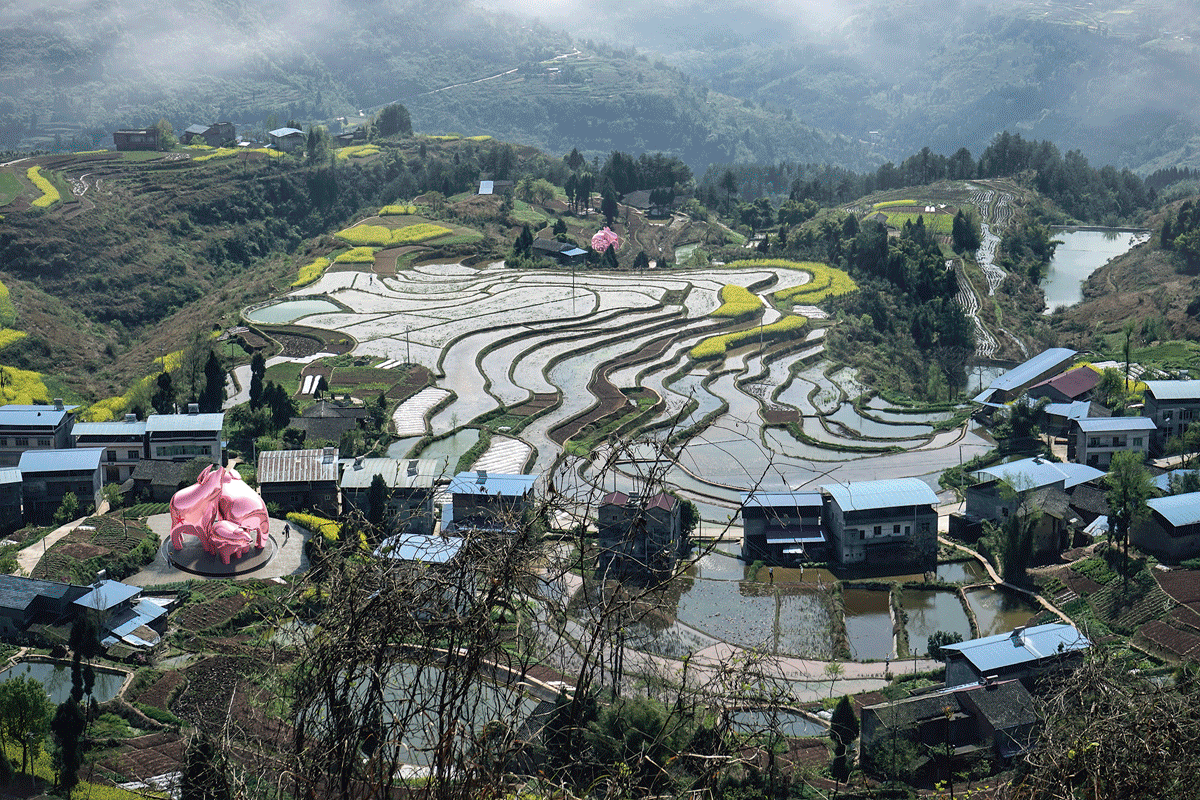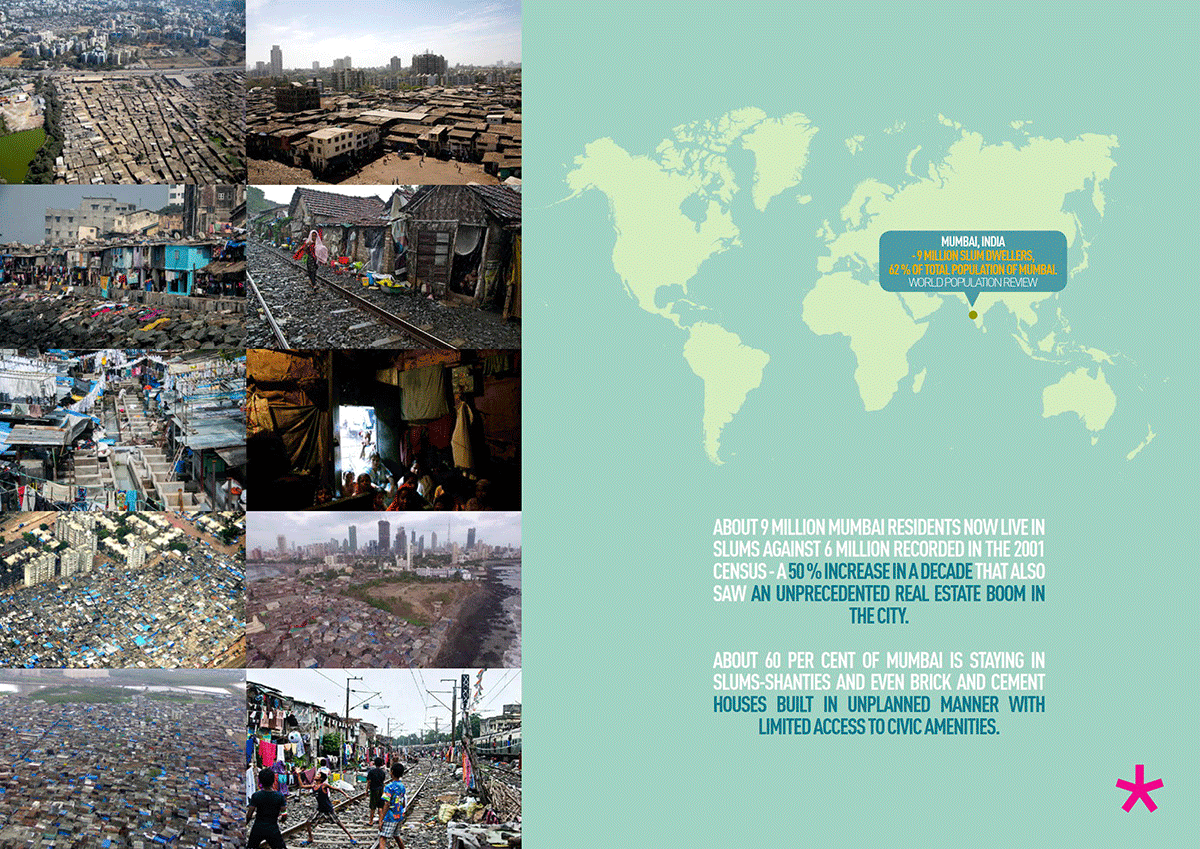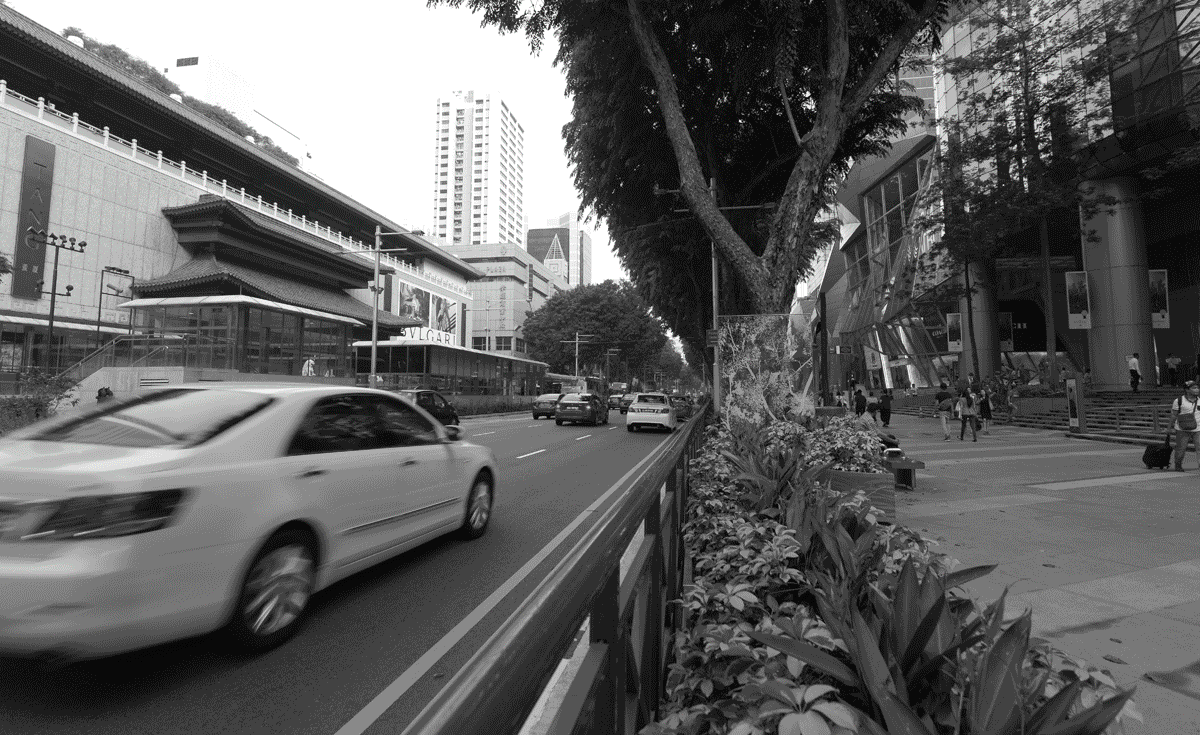WE SEARCH - WHY WE RESEARCH? SPARK 2020 11/12
“I like the idea that it was something completely made from the desire to make architecture, no commission, no client, it was made for the love of architecture.
I think you can make architecture without a client and it can be just as intense and valid and just as important. Architecture is something with intensity. It finds its own existence and place”
– Steven Holl in “Studio Talk”
WE INITIATE
Since 2014, SPARK has been conducting at least one self-funded and self-initiated research project a year. The beginning of each of these research projects is not a client or design brief, but sincere observations of the various aspects of our lives.
SPARK’s Mumbai Tetra Towers
Be it social, environmental or communal, these observations sparks our innate drives to create “architecture”, in the form of enticing and communicative graphics, that garner attention from a wider audience to increase awareness of global issues, especially in this period of profound technological, cultural and environmental instability.
Designing without a brief does not translate to an easy slack task. Quite the contrary, SPARK’s research thought process is as intense, if not more intense, than a project with a clear design brief.
“These drawings are talking to people’s imagination and are meant to shock. That makes people think – people should think that something else is possible.
Open up the possibilities.“
WE COMMUNICATE
Research paper, excel spreadsheets and data charts are perhaps good tools to systematically articulate and develop academic concepts, but not necessarily the best tools to stimulate readers’ imagination and emotion.
Communication, especially today’s mass digital communication demands a sense of “urgency” in perceiving, processing and response.
SPARK’s research concepts and ideas are carefully represented by sets of graphics, diagrams, renders and sketches, to make sure the essence of our cross-disciplinary research is effectively communicated and committed to memory midst the sea of digital information.
SPARK’s Beach Hut
The quasi-realistic renders created for each research project is not meant to shock the audience, but to inspire and to provoke in the imagination possibilities of a better human world.
“Even if you don’t (make it happen), the ideas that result from the effort accumulate in your idea bank.
As they accrue, your creative energy gains strength ”
– Kenya Hara in “Designing Japan”
WE BENEFIT, SO DO YOU
Outcome of our research projects varies. Some garnered global attention novel concepts turned into real-world projects. Others, led to industry wide conversations, interviews, conferences, articles, and simple email exchanges. More have been kept intramural, deposits in our knowledge bank, our future creative currency.
SPARK’s Home Farm
Whilst SPARK keeps searching, and researching, we trust that we have delivered an image, a diagram or a concept, that has opened your mind to countenance with us a better reality.
EPILOGUE
Through the publication of our research projects we aim to generate discussion about the potentials that can emerge from current issues. It is a means of conversation with professionally trained architects and the public, that hopefully will advance change in our built environment.
THE AGENDA
Below we introduce some of our research projects sorted into 3 categories : Global Urgency, Sustainable Communities, and Enhanced Liveability.
GLOBAL URGENCY
01 Improving Sanitation – Big Arse Toilet
Open defecation is a major contributing cause of disease in underdeveloped countries. Some 842 000 people in low- and middle-income countries die as a result of inadequate water, sanitation, and hygiene each year. Poor sanitation is believed to be the main cause in 280,000 of these deaths.
SPARK’s Big Arse Toilet
Human waste is converted into biogas and via a micro CHP unit (combined heat and power) converted into electricity. This helps prevent disease and assists in community development by lifting social barriers faced particularly by women and perpetuating disproportionate levels of disease associated with poverty and open defecation. SPARK’s toilet has been developed to highlight the fact that little is being done to provide solutions for vulnerable individuals that are worst affected by lack of access to sanitation that most take for granted.
02 Tackling Water Pollution due to Industrial Farming – 3 Little Pigs
China’s rapid urbanisation, the exodus of many from the countryside to the city and the general increase in wealth of the average Chinese citizen has led to many changes to the fabric of society. One not often discussed is the increase in the consumption of meat leading to profound implications on the Chinese farming industry particularly Pig farming (pork being far the most popular type of meat consumed nationally). The impact of China’s agricultural transition, the surging appetite for meat and the associated expansion of farm size resulted in 30% to 70% of manure being dumped directly into rivers. The indiscriminate discharge of livestock manure is the major cause of eutrophication in China’s lakes, undermining the quality of the freshwater supply, killing fish and the loss of amenity value of China’s beautiful lakes.
SPARK’s 3 Little Pigs
Our concept of “3 Little Pigs” keeps livestock manure out of the water system by converting it into a usable product; biogas which can be used to generate electricity or used as a utility for cooking and heating. The gas created in the biogas dome is stored under pressure in 3 custom Pig shaped double membrane PVC envelopes that have a combined capacity of 400 cubic metres. The gas dome and gas holders are easily transportable and reusable so can be moved to different locations. Our proposal highlights the urgency of tackling water pollution in China and the opportunity to use positively a waste product as a source of energy.
03 Tackling Slums – Mumbai Tetra Towers
The Mumbai Tetra tower is an investigation into how to house sustainably those that live in the Mumbai slums in a hybrid tower manufactured from concrete, timber and recycled Tetra Pak cartons.
SPARK’s Mumbai Tetra Tower
SUSTAINABLE COMMUNITIES
01 Tackling Plastic Waste – Beach Hut
HDPE (high density polyethylene) is a plastic that makes up a large percentage of the plastic dumped into the ocean. The annual world market volume for HDPE is around 30 million tonnes, just a small percentage of this figure is sufficient to contribute to the slow death of the oceans and the extensive life cycles it supports. HDPE is non-biodegradable and can take centuries to decompose, so it is imperative that the HDPE ocean waste is collected and recycled and used again wherever possible to abate the escalating damage we are doing to our planet.
SPARK’s Beach Hut: East Coast Park Singapore
SPARK’s Beach Hut is fabricated from discarded HDPE plastic collected from the beaches and seas along Singapore’s East Coast Park. The Beach Huts animate the shoreline and provide rentable occasional accommodation for the many “beach campers” who frequent the park on the weekend. The Beach Huts are naturally ventilated and self-sustainable, they shelter the users in the traditional sense of the beach hut from wind and rain whilst providing a level of basic amenity, enjoyment and fun. The Beach Hut is an important vehicle for educating the public about the state of the world’s oceans and the problems caused by the flagrant dumping of plastic and other waste material into the sea.
02 Providing Food-producing Housing for Aging Population – Home Farm
This project emerges from the dual challenges of an ageing population and the multi-pronged problem of food insecurity. This research-based design addresses two pressing challenges faced by Singapore: how the city state might support a rapidly ageing society (with its need for additional infrastructure of living, caring and working) and how it might enhance its food security (90% of which is currently imported). As the political vision is for Singapore to become a ‘City in a Garden’, this conceptual proposal also expands on this vision in a critical way – through a productive capacity.
SPARK’s Home Farm
Unlike most other vertical farming initiatives in Singapore this brings intensive farming into the city environment, right outside one’s front door. Apartments are contained in an elevated green strata-like band that snakes across a cluster of pod-like facilities buildings at ground level. On the stepped, inward-facing façade of the band, aquaponic farming tubes (at the lower levels) and soil-based strip gardens (on the narrower upper levels) create an active, living façade that will change throughout the year with the growing and harvesting cycle of leafy green vegetables and herbs. Efficient agro-technology closes the gap between the producers and consumers of food, thus opening the potential to explore new possibilities in terms of how we might live, work, be cared for, and care for ourselves ‘post-retirement’.
LIVEABILITY ENHANCEMENT
01 Streets for People – Orchard Road
Like many of the world’s most famous shopping streets Orchard Road is a key city transport artery where pedestrians are confined to pavements either side of a noisy traffic choked highway. Crossing from north to south is at best inconvenient and requires the usual paraphernalia of barriers, bollards and protective planted barriers to maintain the safety of the shopping hoard from the traffic.
So, what is the future of Orchard Road?
SPARK’s Orchard Road
We envision Orchard Road maintaining its position as a key city street but dedicated to the pedestrian in a green calm environment, free of noise, traffic pollution with the aggregation of years of urban clutter removed. The Orchard Road of 2065 is a terraced pedestrian street that links existing adjacent shopping malls via a new open air environmentally cooled public space punctuated by event piazzas. To facilitate the construction of the sunken street all of the traffic has been removed to a discreet tunnel below the street, this provides a totally pedestrian car free environment. The transformation of Orchard Road will improve the urban environment at the heart of the city, a hostile environment is transformed into a truly civic space which moderates the requirements of long-term strategic infrastructure with the potential Orchard Road 2065 as a place for the people.
02 Reinvigorate Hawker Culture – Solar Orchid
Singapore was built on an intimate relationship with the water, which has historically been an artery of culture, commerce and recreation. Recent decades of urban development, industrialisation and land reclamation have largely severed this relationship, deleting most of the traditional kampungs and kelongs from the coast, inland water bodies, and sea.
SPARK’s Solar Orchid
SPARK’s concept for a floating hawker centre reimagines a new relationship with Singapore’s public waterscape. The Solar Orchid is a mobile, reconfigurable and sustainable floating hawker centre that could ‘pop up’ in a variety of locations and formats. Each pod accommodates one to three cooking stalls (incorporating built-in exhaust, water, gas, electrical, waste collection and water recycling services) as well as table settings. The protective canopy is an energy-generating inflated ETFE pillow incorporating thin-film photovoltaic cells. The idea of reinventing the hawker centre grew from the widely documented observation that the popularity of the traditional hawker lifestyle has begun to wane. We seek to re-energise the hawker centre typology while retaining the soul of a very Singaporean dining experience.
03 Transforming Petrol Stations – Kiss the Petrol Kiosk Goodbye
The car manufacturing industry is going through a most extraordinary revolution since the development of the internal combustion engine with the worldwide rocketing in sales of electric cars. It is likely that by 2030 most countries will radically reduce or eliminate the manufacture / import or export of petrol and diesel cars halving the reliance on oil imports and closing the gap in the world’s climate target set at the 2015 UN Paris summit.
SPARK’s Kiss the Petrol Kiosk Goodbye
Petrol service stations that have been with us for decades will effectively disappear. The real estate impact is an opportunity to design replacement activities and programmes that can engage with their local communities as well as providing plug-in charging facilities for the growing phalanx of electric vehicles.
SPARK associate director Yun Wai Wing, architectural designer Liliani Saputri. November 2020.












